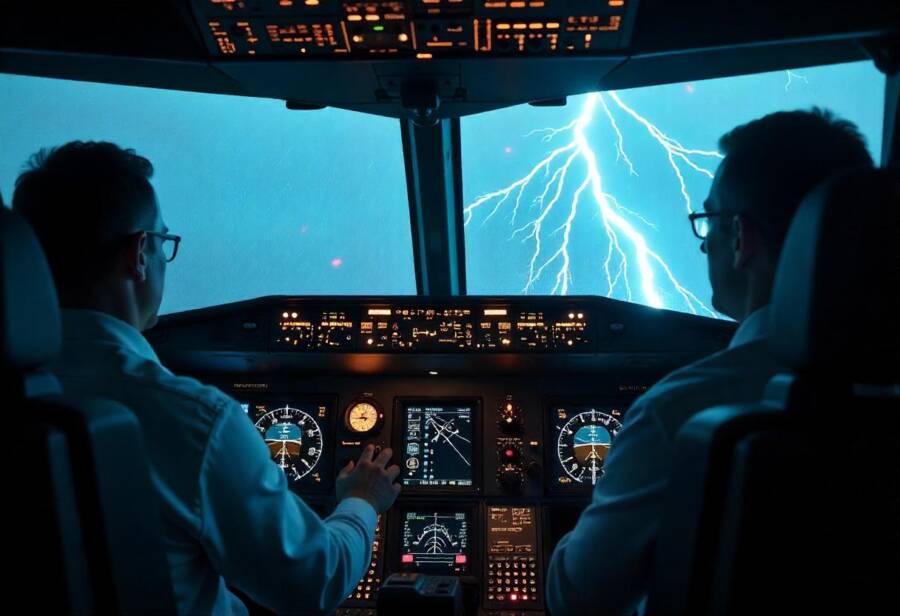Do You Think Aliens Will Visit Us?
We can safely agree on the fact that aliens hold a very special place in our collective consciousness. They represent the heroes of an interesting new future, but they are also the harbingers of planetary doom. If they are able to visit us, this would mean their technological abilities are far out of reach for us, and our nascent species could be beholden to their extraterrestrial wishes and impulses.
Whether these whims would be to our advantage or not, solely depends on whether they are friends or foes. So far, alien interactions are only in sci-fi literature and cinema, but that could change anytime now.
So make sure you enjoy life as you know it now because things could potentially change in a matter of years. That’s right; by 2029, we might meet and greet them. According to the most recent study co-authored by Reilly Derrick and Howard Isaacson from UCLA and UC Berkeley, published in the journal “Publications of the Astronomical Society of the Pacific,” aliens might visit us and decide to stay.
Considering the vast number of stars and worlds in this universe, it might start to feel quite weird that we haven’t found anyone else yet. Life is extremely rare; that’s a fact. However, this doesn’t alter the idea that there should be millions of civilizations out there waiting to be discovered.

The questions still remain: where are they?
It’s possible that we could be all alone in the universe, just an island of complexity in quite a sterile existence. It’s also very possible that aliens are whizzing around all the time and don’t care to talk to us. Maybe the most likely explanation is related to the vastness of space and time itself. Added: As long as we live, we learn.
So we think it’s a great thing you stumbled upon this article because here you will learn a valuable set of advice and tips on how to take care of your car when no mechanic will answer your phone. Who needs them anyway? I’m just kidding. Sometimes, they’re truly God-sent.
To have this conversation, our signals need to reach an alien intelligence. For now, the travel time of our messages is quite limited by the universal speed limit. We can only reach the speed of light. Then, assuming there might be someone to receive our signals at the other end, they still have to send a response back our way, which might take the same amount of time.
It could be that we haven’t heard from anyone yet simply because we sent a call into the cosmos a second ago and the interstellar operator hasn’t had time to connect us yet.
The first opportunity to talk with our extraterrestrial neighbors is coming up rapidly, and when it does, humanity might step into a completely different world, where there’s a real possibility of alien contact. Moreover, it all traces back to Voyager 1. When the first spacecraft launched in 1977 with its golden record, an ambassador to the stars, it embarked on a journey that would last for many decades, if not forever.
Voyager 1 spent the majority of its four decades traversing the solar system until 2012 when it exited the heliosphere. That’s exactly the area of space outside the sun, inside of which the solar wind has a great impact. It’s also a way to define what is inside and outside our solar system. Now, 50 years later, it is still operational and still sending and receiving signals.
But the signals don’t stop when they reach the spacecraft. Instead, they keep racing off in the direction Voyager goes, where they might come into contact with other forms of intelligent life. Derrick and Isaacson followed the paths of Voyager 1 and 2, Pioneer 10, Pioneer 11, and also of New Horizons.
Then, they bumped paths against the Gaia Catalogue of Nearby Stars just to find locations where our signals could cross paths with other forms of intelligence. This allowed them to find stars of interest and even establish the signal transit times for those specific locations.
In other words, they looked at where the signals were going, pointing out any stars along that path that could have life. They also figured out how long it would take anyone living there to get our messages and send an answer.
In an ideal universe, we would get hit on the first try. If that’s so, we might get an answer as early as 2029. The first opportunity for contact found in the study ties back to transmissions from Pioneer 10, which also reached the white dwarf Gaia EDR2 back in 2002.
The star “shines” at a distance of 8.54 parsecs, which equals 27.6 light years, much shorter than the Kessel Run. This means that any response from it would take a minimum of 28 years to reach us, assuming that our message was even received and that it would hastily respond to us.
Even if this first opportunity is missed, the paper still outlines other possible connections. Eventually, someone will answer it, and it might happen any day now.

If aliens come from another world, they definitely have some other forms of travel. To be honest, it’s quite exciting to think about it, but one thing we know for sure: it’s nothing like what we have here on Earth. In fact, it is almost impossible for us (at this point) to estimate how they would even go from one star to another.
The distances are so wide, and the energy requirements require such extremes that we can’t even imagine. There’s a law of science established by Albert Einstein that says nothing can travel as rapidly as the speed of light, which is 186,000 miles per second.
The fastest object ever made by man, the Voyager spacecraft, is now traveling at 11 miles per second. With this speed, the scientific probe Voyager, sent into space in 1977, would take 73,000 years to reach the closest star.
That’s why if you ask many scientists out there, they will say that space travel is nothing but a waste of time. There’s also a rule: if you want to be alive at the end of your experiment, there’s no point in traveling to the nearest star.
If humans can’t travel to the stars, most scientists will say that extraterrestrial life can’t come here either. However, according to Michio Kaku, one of the leading theoretical physicists in the world, too many scientists are quick to completely dismiss the possibility that other civilizations might, in fact, have better technology!
It’s true that Einstein might have said that nothing is faster than the speed of light, but he also left this loophole in his theory. Here’s the thing: in Einstein’s theory, space and time are fabrics. If you remember well, in school we learn that a straight line is the shortest distance between two points.
But what if that’s not true? If you fold the sheet of paper and punch a hole through it, you start to realize that a wormhole is the shortest distance between two points.
If you feel like you haven’t had enough of this subject, lucky you! We have this amazing documentary to recommend, called “Close Encounters of the Fifth Kind: Contact Has Begun,” where you can find out more about the most controversial information that was ever released to the public. From whistleblowers to scientific experts, extraterrestrial presence on our planet is expected anytime now.
Are you curious to know more about extraterrestrial life? We recommend you watch “Extraterrestrial Life: From Fiction to Fact?”
We have many other interesting articles in store, so if you want to read more, we definitely recommend checking out: 7 Things From Outer Space That Will Destroy the World















2 Responses
I AGREE!!!
If any civilizations out there are 10,000 to 35 thousand years more technologically advanced than our own they would certainly have the capacity to travel between the stars. Look at what we have accomplished in the last 100 years or so